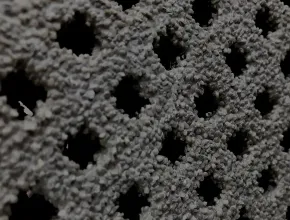loading...
- No. 9, Xingyuan South Street, Dongwaihuan Road, Zaoqiang County, Hengshui, Hebei, China
- admin@zjcomposites.com
- +86 15097380338
- Welcome to visit our website!
Understanding Grating Covers and Their Importance in Infrastructure Design
Understanding Grating Covers An Essential Component in Construction and Design
Grating covers are an integral component in various construction applications, serving both functional and aesthetic purposes. From industrial settings to architectural designs, these versatile structures play a crucial role in ensuring safety, durability, and effective drainage.
What are Grating Covers?
Grating covers are flat surfaces made of materials such as metal, fiberglass, or plastic, designed to cover openings in floors, walkways, and other surfaces. They are usually fabricated with a series of bars or grids that provide structural support while allowing for ventilation, drainage, and light passage. Commonly found in factories, parks, and urban environments, grating covers are essential for managing both pedestrian and vehicular traffic.
Functions of Grating Covers
One of the primary functions of grating covers is safety. They provide a safe surface over holes or trenches, reducing the risk of accidents and injuries. In industrial areas, where heavy machinery or vehicles operate, strong grating covers can support significant weight while preventing collapses. The open design of grating also helps in preventing the accumulation of debris or liquids, reducing the risk of slips and falls.
Another critical function is drainage. Grating covers allow rainwater and debris to flow through the openings rather than pooling on surfaces. This is particularly important in urban planning, where water runoff needs to be efficiently managed to prevent flooding. By facilitating better drainage, grating covers contribute to the overall health of the urban ecosystem, reducing the need for costly stormwater management systems.
Materials Used in Grating Covers
Grating covers are made from various materials, each offering unique benefits
.1. Steel Steel grates are common in industrial applications due to their outstanding strength and durability. They can withstand heavy loads and are typically coated with anti-corrosive layers to extend their lifespan.
grating cover

2. Aluminum Lighter than steel, aluminum grating covers are resistant to corrosion and are an excellent choice for environments exposed to chemicals or moisture. Their light weight makes them easier to handle and install.
3. Fiberglass Fiberglass grating covers are ideal for applications requiring high corrosion resistance, such as in chemical plants or wastewater treatment facilities. They are non-conductive and provide non-slip surfaces, enhancing safety in potentially hazardous environments.
4. Plastic Lightweight and corrosion-resistant, plastic grating covers are often used in residential or light commercial settings. They are easily customizable and available in various colors and designs, making them suitable for decorative applications.
Design Considerations
When selecting grating covers, it is essential to consider specific design factors. Load capacity is a critical aspect, as the cover must safely support the anticipated weight. Additionally, the spacing of the bars is vital for the intended application; tighter spacing might be required in pedestrian areas to prevent small objects from falling through.
Aesthetic appeal should also not be overlooked. In areas where design matters, such as parks or public squares, decorative grates can enhance the visual appeal of the surroundings while serving practical purposes.
Installation and Maintenance
Installing grating covers requires careful attention to ensure they are securely fitted and capable of supporting weight. It is also essential to conduct regular maintenance checks, inspecting for any signs of wear or damage that may compromise safety or functionality. Proper maintenance, such as cleaning debris and checking for corrosion, can extend the lifespan of grating covers significantly.
Conclusion
Grating covers are vital to modern construction and urban design. Their combination of safety, functionality, and aesthetic flexibility makes them indispensable in a wide range of applications. As construction practices continue to evolve, the role of grating covers will likely expand, further enhancing the safety and efficacy of our built environments. Understanding their importance not only aids in selecting the right type for specific needs but also ensures that these structures continue to serve their purpose effectively in the years to come.
-
The Rise of FRP Profiles: Strong, Lightweight, and Built to LastNewsJul.14,2025
-
SMC Panel Tanks: A Modern Water Storage Solution for All EnvironmentsNewsJul.14,2025
-
GRP Grating: A Modern Solution for Safe and Durable Access SystemsNewsJul.14,2025
-
Galvanized Steel Water Tanks: Durable, Reliable, and Ready for UseNewsJul.14,2025
-
FRP Mini Mesh Grating: The Safer, Smarter Flooring SolutionNewsJul.14,2025
-
Exploring FRP Vessels: Durable Solutions for Modern Fluid HandlingNewsJul.14,2025
-
GRP Structures: The Future of Lightweight, High-Performance EngineeringNewsJun.20,2025
